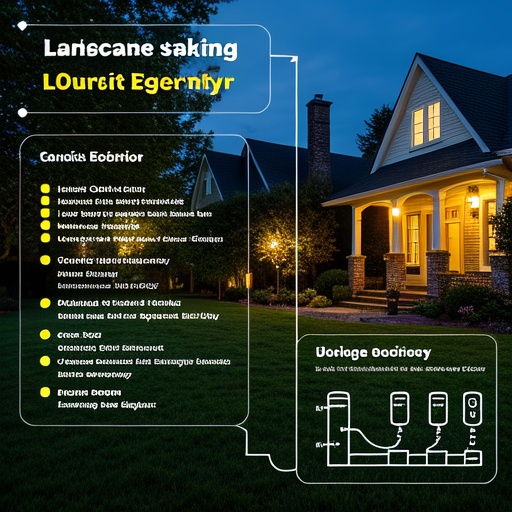Exploring Landscape Light Power Supply, the "Power Support" for landscape lighting
In the realm of outdoor aesthetics and functional design, landscape lighting holds a pivotal role. It transforms gardens, parks, and architectural facades into mesmerizing nightscapes, while also ensuring safety and security. At the heart of this transformation lies the often-overlooked hero – the landscape light power supply. This article delves into the world of powering outdoor illuminations, exploring advancements, considerations, and the future of sustainable lighting solutions.
The Evolution of Landscape Lighting Power Supplies
Gone are the days when simple, incandescent bulbs dominated the landscape lighting scene, drawing significant amounts of energy and requiring frequent replacements. Today's landscape lighting has evolved dramatically, thanks to innovations in LED technology and a growing emphasis on sustainability. LED lights consume less power, last longer, and offer superior color rendering, making them the ideal choice for modern landscape lighting projects. However, even the most efficient LED lights require a reliable power source to function optimally.
Understanding Landscape Light Power Supplies
A landscape light power supply is essentially the backbone that energizes the entire lighting system. It converts electrical energy from a source (usually mains electricity or renewable energy) into a suitable form for operating outdoor lights. There are several types of power supplies used in landscape lighting, each with its advantages and limitations.
1. Direct Burial Low-Voltage Systems: These systems use a low-voltage transformer to step down the high voltage from the mains to a safer level (typically 12V or 24V) for outdoor use. The transformer is installed indoors or in a weatherproof enclosure, and cables are buried underground to connect it to the lights. This setup ensures safety but may require professional installation due to wiring complexities.
2. Solar-Powered Lighting: Harnessing the sun's energy, solar-powered landscape lights have gained popularity for their eco-friendliness and ease of installation. They consist of photovoltaic panels that convert sunlight into electricity during the day, which is stored in batteries and used to power the lights at night. While initial costs can be higher, these systems offer long-term savings on energy bills and require minimal maintenance.
3. Line-Voltage Systems: Directly connecting outdoor lights to the mains electricity supply (usually 120V or 240V) simplifies installation as no transformers or low-voltage cables are needed. However, this approach poses higher risks of electric shock and requires robust, weatherproof fixtures to ensure safety and durability.
Considerations for Choosing a Power Supply
When selecting a power supply for your landscape lighting project, several factors should be taken into account:
- Energy Efficiency: Look for power supplies with high efficiency ratings to minimize energy loss and reduce operational costs.
- Compatibility: Ensure the power supply matches the voltage and wattage requirements of your chosen lights.
- Safety Features: Opt for systems with built-in safety mechanisms such as overcurrent protection and grounding options.
- Scalability: Consider future expansions when choosing a power supply capacity; it's better to have some headroom than outgrow your system quickly.
- Environmental Impact: If sustainability is a priority, explore solar-powered options or energy-efficient LED technologies.
The Rise of Smart Controls
In recent years, smart technology has made its way into landscape lighting, offering unprecedented control and customization. Smart controllers allow users to adjust lighting scenes, schedules, and brightness levels remotely via smartphone apps or voice commands. This not only enhances convenience but also contributes to energy efficiency by enabling precise control over when and how much light is used.
Sustainable Lighting Practices

As awareness of environmental issues grows, so does the demand for sustainable lighting solutions. Landscape lighting can play a part in reducing carbon footprints by adopting energy-efficient technologies, utilizing renewable energy sources, and implementing smart controls to optimize usage. Additionally, proper lighting design that avoids light pollution and respects local wildlife is essential for preserving natural habitats.
Conclusion
Landscape light power supplies are the unsung heroes behind captivating outdoor lighting displays. From traditional low-voltage systems to cutting-edge solar and smart technologies, the options available today cater to diverse needs and preferences. As we move towards a more sustainable future, embracing energy-efficient and environmentally friendly lighting practices becomes paramount. By understanding the intricacies of landscape light power supplies and making informed choices, we can illuminate our outdoor spaces responsibly, creating enchanting environments that harmonize with nature and technology alike.
 In heritage architecture prote
In heritage architecture prote
 When small-batch customization
When small-batch customization
 Have the electromagnetic emiss
Have the electromagnetic emiss
 When Triac dimmable power supp
When Triac dimmable power supp
